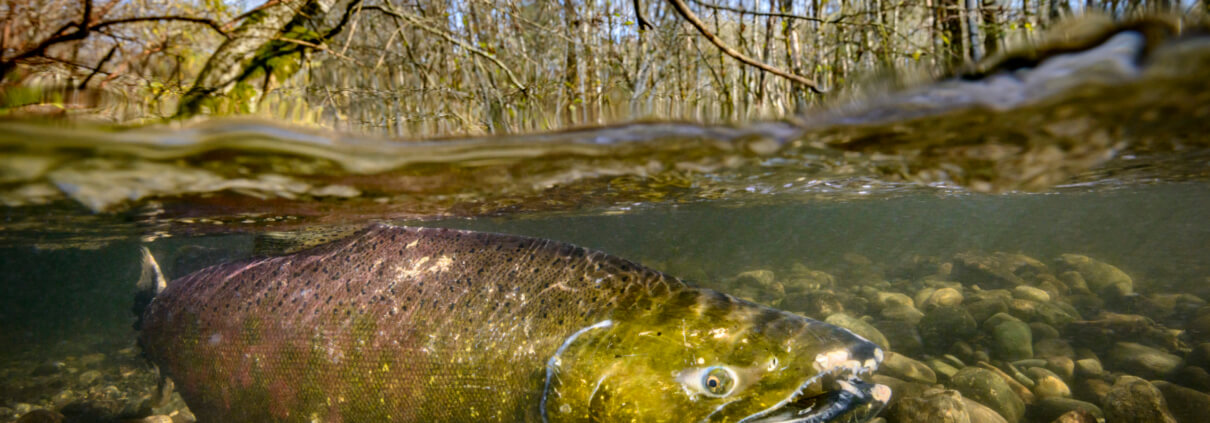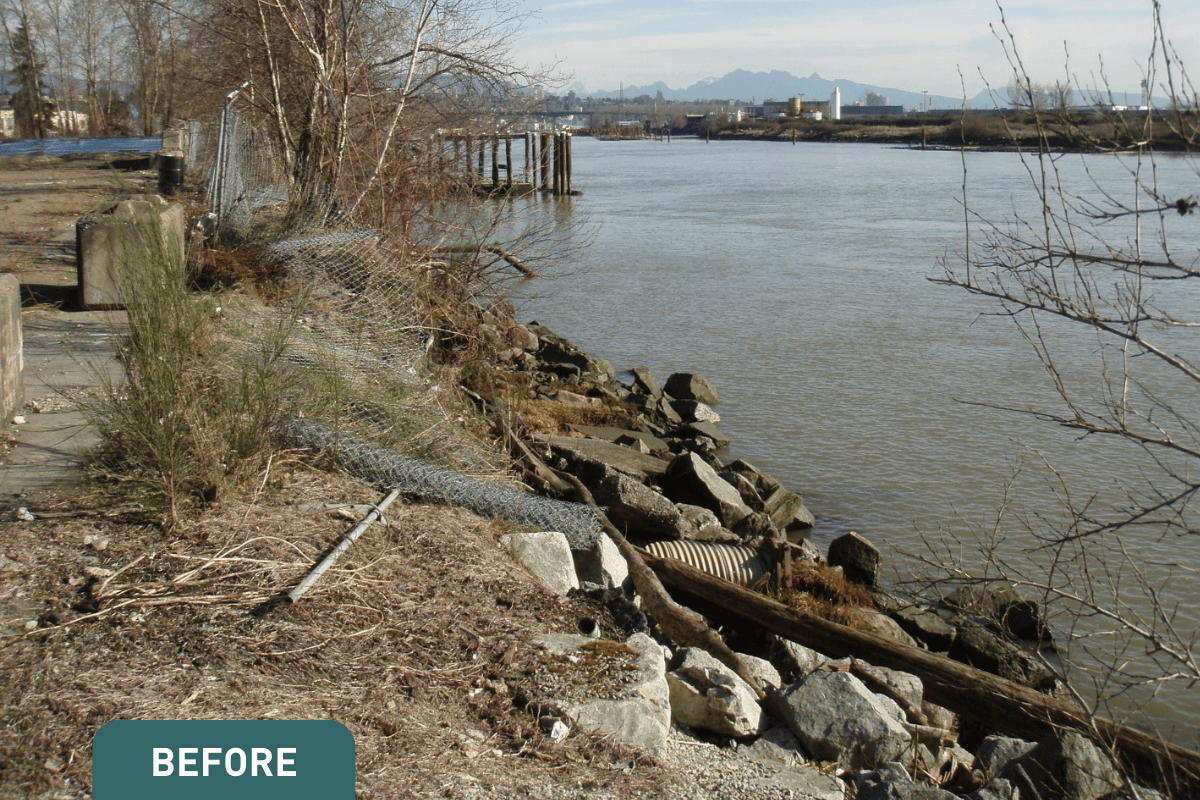Resilient Coasts for Salmon
Nature-based Solutions for Climate Change
Protecting coastal communities from ocean waves and erosion has traditionally involved hardening shorelines with structures like dykes, seawalls and jetties. However, these artificial structures often cause more problems than they solve. The Resilient Coasts for Salmon Program educates shoreline owners and local governments about the value of using a more natural approach, and provides free training to land-use professionals on how to apply ‘green concepts’ and solutions for climate change. Thanks to a $1.9 million grant from the Ministry of the Environment and Climate Change Canada’s Climate Action and Awareness Fund the program launched this summer.
The program area is focusing on Victoria up to Port McNeill where urgent action is needed. These communities are becoming more exposed to risk and habitat loss as climate change increases the frequency and intensity of heavy precipitation and storms.
“Climate change is one of the biggest direct threats facing wild Pacific salmon,” said Michael Meneer, CEO of the Foundation. “In the ocean we’re seeing rising sea levels and increased flooding along shorelines. Coupled with human activity, there are many cumulative impacts that threaten salmon. Fortunately, there are many factors we can control that will make a big difference – naturalizing hardened shorelines is one of them. By making the training free we hope to significantly boost adoption of green techniques.”
“While nature is certainly at risk from climate change, it is also a critical ally in the fight against it,” said the Honourable Jonathan Wilkinson, Minister of Environment and Climate Change. “I am pleased to see the Pacific Salmon Foundation embracing the power of nature to adapt to a changing climate and protect vital wild Pacific salmon habitat. This project will help support the recovery of the wild Pacific salmon, which holds important cultural significance for Indigenous peoples, for generations to come.”
Manmade structures exacerbate erosion by deflecting energy from pounding waves to other parts of the shoreline, removing beach habitat in the process. Forage fish use beaches to spawn and provide crucial nutrition for the marine food chain including Pacific salmon. In contrast, nature-based approaches using absorbent materials like dirt, sand and plants that beautify shorelines, reduce erosion, and can be cheaper to build and maintain. They also create habitat for fish and wildlife, filter out pollutants from stormwater, and help to store carbon that would otherwise contribute to global warming.
“We will also be engaging citizens to map where armoured shorelines are to better understand the extent of the issue,” said Isobel Pearsall, Director of the Foundation’s Marine Science Program. “Part of the grant will be used to build demonstration sites that showcase the beauty and function of green techniques, and ultimately inspire people to transition their properties.”
Adds Pearsall: “Our program builds on the good work that the Stewardship Centre for BC has already been doing so we can hit the ground running.”
“The Stewardship Centre for BC has been delivering the Green Shores Program since 2010 and is our partner in the Resilient Coasts for Salmon with PSF. We train coastal engineers, landscape architects, biologists and planners and help governments with Green Shores implementation.”
People interested in participating in the program are encouraged to contact our Resilient Coasts for Salmon Program Manager, Kyla Sheehan at ksheehan@psf.ca




